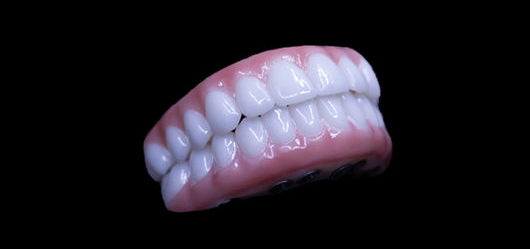The Ultimate Guide To Dental Sense
The Ultimate Guide To Dental Sense
Blog Article
More About Dental Sense
Table of ContentsWhat Does Dental Sense Mean?The 6-Second Trick For Dental SenseFacts About Dental Sense UncoveredNot known Facts About Dental Sense
are medical tools operatively dental implanted right into the jaw to bring back a person's ability to eat or their look. They give assistance for synthetic (fake) teeth, such as crowns, bridges, or dentures. When a tooth is lost because of injury or condition, a person can experience issues such as quick bone loss, faulty speech, or modifications to chewing patterns that result in pain.Dental dental implant systems include an oral implant body and oral implant joint and may also include a joint addiction screw. Cosmetic dentistry services. The dental implant body is operatively placed in the jawbone instead of the tooth's root. The dental implant joint is normally affixed to the implant body by the abutment addiction screw and extends via gums right into the mouth to sustain the attached man-made teeth
(https://www.domestika.org/en/dentalsense1)Framework of The Dental Implant System picking oral implants, speak to your dental service provider regarding the potential advantages and threats, and whether you are a prospect for the procedure. Points to consider: Your total health is a vital consider identifying whether you are a good candidate for dental implants, just how long it will certainly require to recover, and for how long the dental implant might remain in location.
Cigarette smoking may affect the healing process and decrease the long-term success of the dental implant. The healing process for the implant body might take a number of months or longer, during which time you generally have a momentary abutment in area of the tooth. the oral implant treatment: Carefully follow the dental hygiene guidelines provided to you by your oral supplier.
Unknown Facts About Dental Sense
Implant failing can result in the need for one more surgery to take care of or replace the dental implant system. Recovers the ability to eat Brings back aesthetic appearance Aids keep the jawbone from shrinking as a result of bone loss Protects the health of the bordering bone and gums Aids maintain adjacent (nearby) teeth stable Enhances lifestyle Damage to surrounding all-natural teeth during implant positioning Injury to the surrounding tissues throughout surgical procedure, such as sinus opening Injury during surgery (for example, fracture of surrounding jawbone) Inadequate function, such as feeling like the teeth do not bite together generally A sensation that the tooth is loosened or turning in position resulting from a joint screw loosening up Implant body failing (looseness of the implant body) because of systemic infection, which might be most likely in patients with unrestrained diabetes because of regional infection in bone and gums supporting the implant body as a result of postponed recovery, which might be more probable try here in people who smoke Difficulty cleaning up the gum tissues around the implant, resulting in bad dental hygiene Untreated periodontal condition Post-surgical feeling numb as a result of nerve impingement or damages Always inform healthcare suppliers and imaging professionals that you have dental implants prior to any kind of magnetic resonance imaging (MRI) or x-ray procedures.
FDA is not knowledgeable about any negative events reported for MRI or x-ray procedures with dental implants. Oral implants systems are usually made from materials that adhere to international consensus criteria of the International Company for Standardization (ISO) or ASTM International. These requirements have details of what makes a risk-free material.

An oral implant is a framework that changes a missing tooth. With screw-like tools, the cosmetic surgeon inserts an implant into the jawbone, and it serves as a support for a fabricated tooth, called a crown. A device called a joint connects the fabricated tooth to the oral implant. The crown is personalized to fit the person's mouth and match the color of their teeth.
Dental Sense Things To Know Before You Buy
Some people are not eligible for oral implant surgical treatment. It is for dental specialists to operate people with: intense illnessuncontrollable metabolic diseasebone or soft cells illness or infectionIf these concerns are fixed, a person can have the surgery. In, dental surgeons refrain from running on people with: If people with any one of the above go through oral implant surgical procedure, there is a greater risk of the implant stopping working.

Oral implant surgical treatment is a customized procedure. It's not the exact same for every person. But the adhering to gives a general review of what you can expect your dentist, dental surgeon, periodontist or prosthodontist to do: Put the implant operatively. Provide you time to heal. Connect the post and last crown, bridge or denture.
Next off, your surgeon will meticulously place the dental implant right into your jaw. If your dental implant is near the front of your mouth, your dental practitioner will make a short-lived tooth for you to wear till you heal.
10 Easy Facts About Dental Sense Explained
Your supplier can inform you what to expect in your scenario. Throughout the healing stage, your jawbone should fuse to the oral implant. This procedure, called osseointegration, is crucial for security and long-lasting success. This procedure can take anywhere from three to 9 months. Sometimes, it may take longer.
When your dental implant heals, your dental professional can connect the abutment (tiny connector article) and your final restoration (crown, bridge or denture). This normally takes about one hour to finish and may require a 2nd minor surgical procedure. You should not feel any discomfort throughout your oral implant procedure because your company will certainly utilize medicine to numb your gums.
Report this page